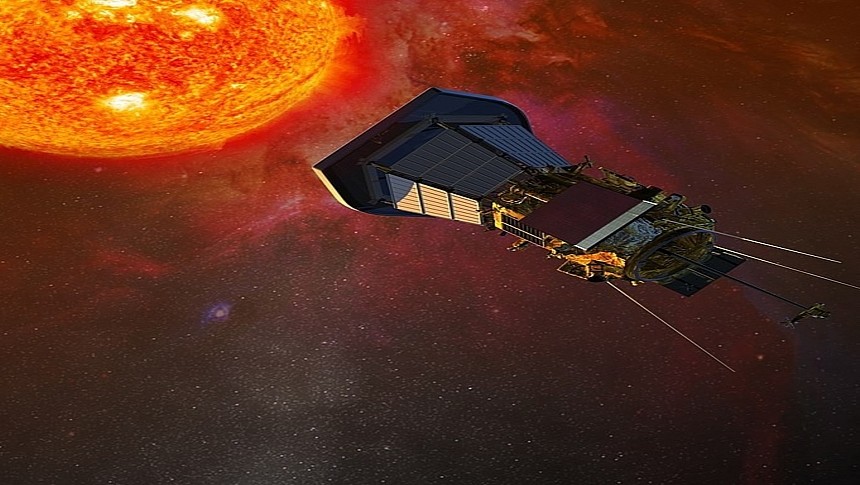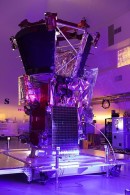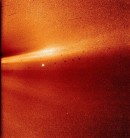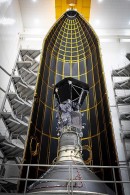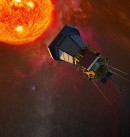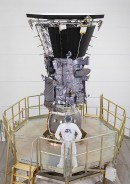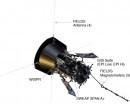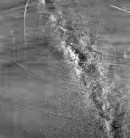Let us paint the scene for you. The day is September 5th, 2022, and NASA's Parker Solar Probe is spending another day speeding toward the outer corona of the Sun at a scarcely believable 400,000-plus mph (643,737.6 kph). The day was just like any other at first, just another in a years-long sprint from the Earth to the probe's closest approach to the solar corona, expected to occur in 2025. That was until the probe slammed head-first into a colossal coronal mass ejection, which could've brought lesser probes to their knees.
But instead, the Parker Solar Probe survived the encounter ostensibly unscathed. Its massive ablative heat shield protected the probe's vital internal components and warded off the worst effects of smacking into huge quantities of piping-hot coronal ejecta. Just over one year later, and NASA's consolidated its findings from the data collected during the incident, and what they've found is nothing short of astonishing. According to a press release from the Parker Solar Probe official blog, the coronal mass ejection the spacecraft encountered last year was one of the most powerful NASA's ever recorded.
Careful studies of the data which the probe's Wide-field Imager for Solar Probe (WISPR) camera collected during the incident comports with a research paper published in 2003, proposing that coronal mass ejection incidents bear at least some responsibility for observable patterns in interplanetary dust and observable space weather phenomena. Though mere theory until the latest round of data collection, Parker Solar Probe's latest encounter with the Sun's wrath appears to point towards a direct link between coronal mass ejections and changing patterns in space weather, which can be observed by space telescopes and probes further afield.
"These interactions between CMEs and dust were theorized two decades ago but had not been observed until Parker Solar Probe viewed a CME act like a vacuum cleaner, clearing the dust out of its path," explained Guillermo Stenborg of the Johns Hopkins Applied Physics Laboratory (APL), the manufacturers and secondary operators of the Parker Solar Probe, second only to NASA. Through careful evaluation of Parker's instrument and sensor arrays during the coronal mass ejection incident, NASA and Johns Hopkins APL were able to prove a possible link between solar ejection activity and the manipulation of space dust consisting of near-atomic level particles to up asteroids, comets, and even moons and planets themselves.
Though such interactions seem to make logical sense, definitively pinning an interaction between solar ejecta and stellar dust could not be done without a direct in-situ observation of coronal mass ejections up close and personal. With this achievement now under its belt, the Parker Solar Probe already has considerable scientific achievement under its belt before it's even reached its closest approach to the Sun. One can only imagine what discoveries lie at the other end of this approach. Another round of applause for the Bugatti Chiron SS of space probes.
Careful studies of the data which the probe's Wide-field Imager for Solar Probe (WISPR) camera collected during the incident comports with a research paper published in 2003, proposing that coronal mass ejection incidents bear at least some responsibility for observable patterns in interplanetary dust and observable space weather phenomena. Though mere theory until the latest round of data collection, Parker Solar Probe's latest encounter with the Sun's wrath appears to point towards a direct link between coronal mass ejections and changing patterns in space weather, which can be observed by space telescopes and probes further afield.
"These interactions between CMEs and dust were theorized two decades ago but had not been observed until Parker Solar Probe viewed a CME act like a vacuum cleaner, clearing the dust out of its path," explained Guillermo Stenborg of the Johns Hopkins Applied Physics Laboratory (APL), the manufacturers and secondary operators of the Parker Solar Probe, second only to NASA. Through careful evaluation of Parker's instrument and sensor arrays during the coronal mass ejection incident, NASA and Johns Hopkins APL were able to prove a possible link between solar ejection activity and the manipulation of space dust consisting of near-atomic level particles to up asteroids, comets, and even moons and planets themselves.
Though such interactions seem to make logical sense, definitively pinning an interaction between solar ejecta and stellar dust could not be done without a direct in-situ observation of coronal mass ejections up close and personal. With this achievement now under its belt, the Parker Solar Probe already has considerable scientific achievement under its belt before it's even reached its closest approach to the Sun. One can only imagine what discoveries lie at the other end of this approach. Another round of applause for the Bugatti Chiron SS of space probes.
